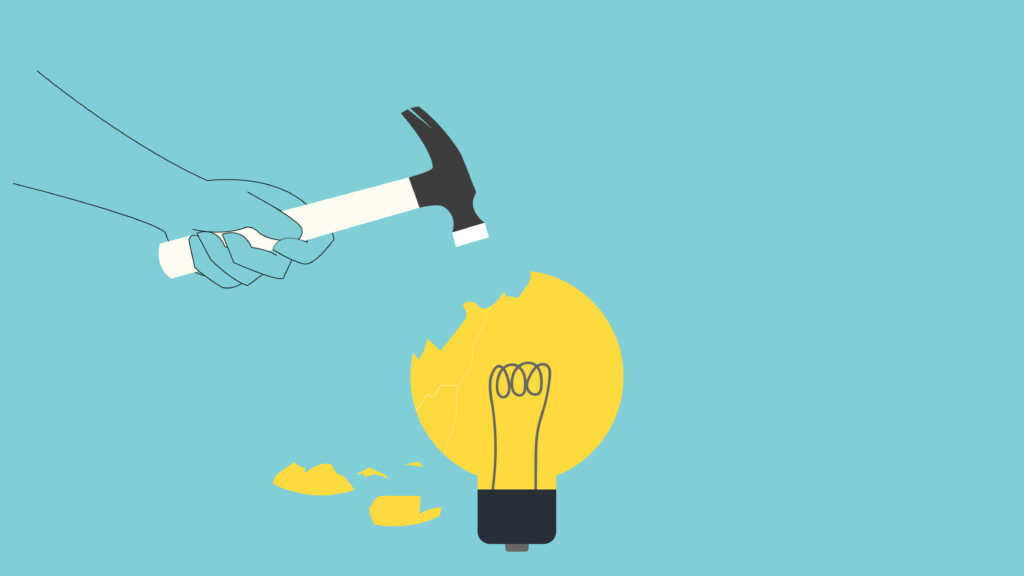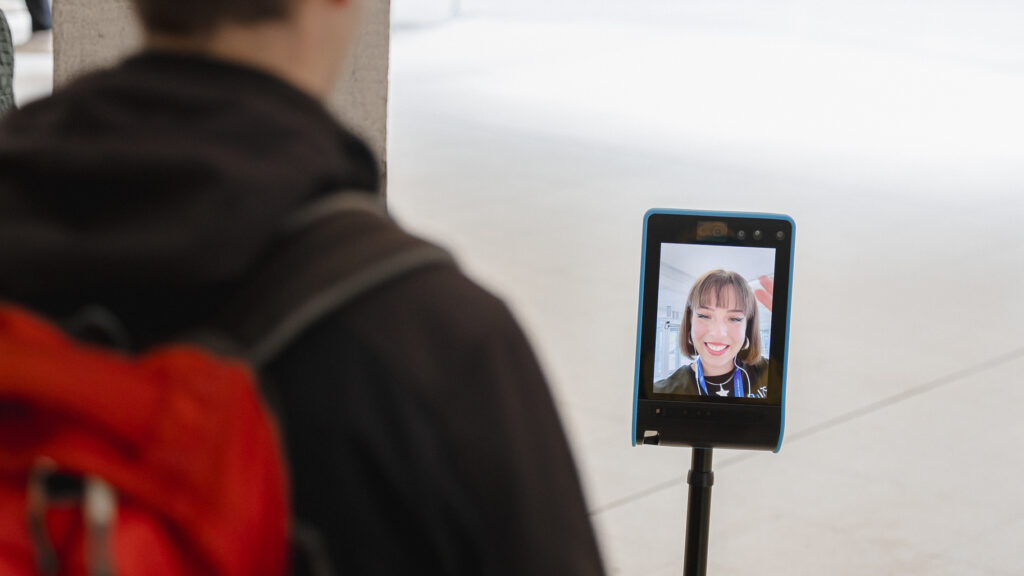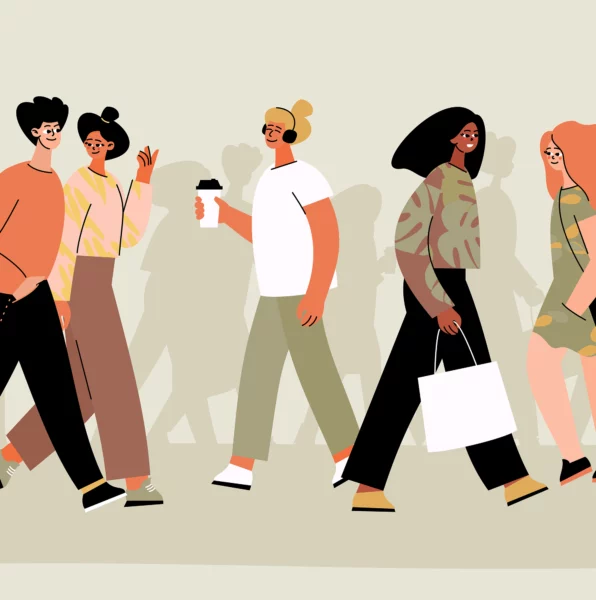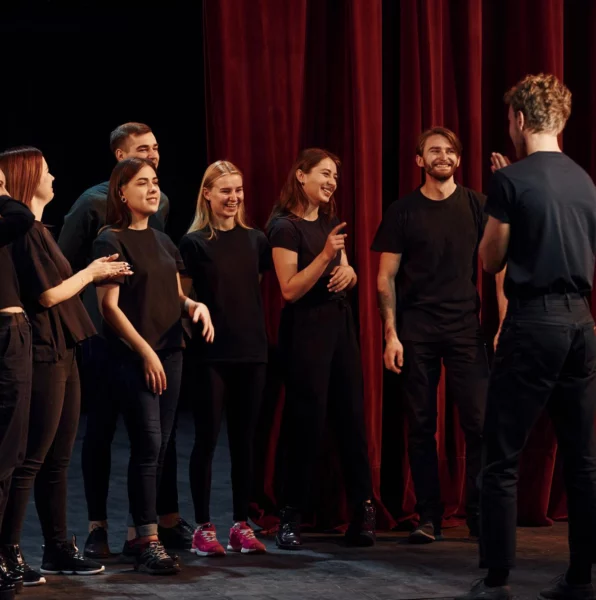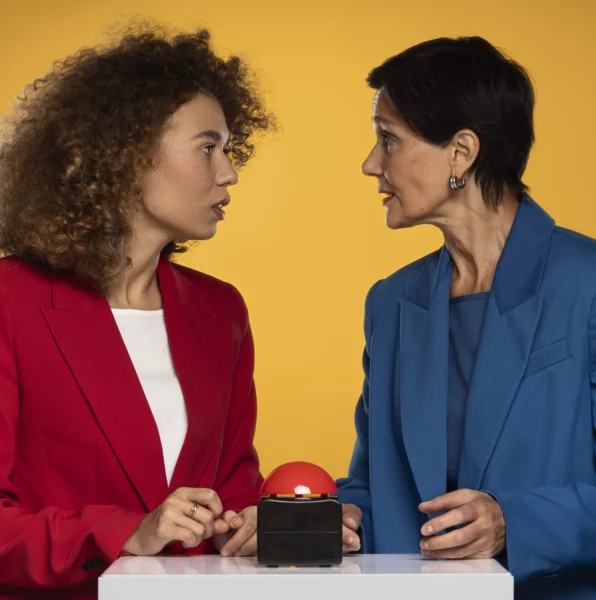The #IOPLimitLess campaign aims to engage young people with physics. Ray Mitchell, head of campaign strategy, explains why the Institute of Physics has turned to TikTok influencers to achieve this goal.
„Physics is for everyone“
One UK government commissioner, Katharine Birbalsingh, claimed recently that girls don’t fancy physics because they dislike “hard maths”. What is your reaction to that?
The idea that girls don’t like hard maths – presumably boys do – goes against all the evidence that the Institute of Physics and others have gathered over the years. We see that a large number of girls do well in maths, but don’t choose physics. We have to look to wider issues in society that discourage them. We have challenged Ms. Birbalsingh’s thinking publicly and would like to change her mind on this because she’s wrong.
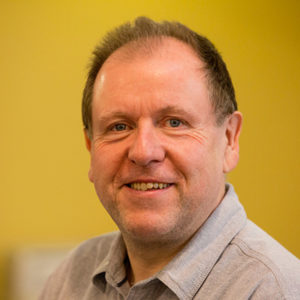
Her statement is contrary to what you are trying to achieve with the #IOPLimitLess campaign, which key message is that “physics is for everyone”. What is the goal of the campaign?
We want to encourage and support more young people from groups that are currently underrepresented in physics to either do A-Levels or Highers1 within our education systems or embark on a technical role or an apprenticeship.
Which groups are currently underrepresented in the physics community?
Girls are the one group that is very public in the discussion at the moment. But there are others: girls and boys from economically disadvantaged backgrounds, young people with disabilities, LGBTQ+ people, and some persons from different ethnic backgrounds, like those of Black-Caribbean descent. They are the most underrepresented ethnicity, and therefore we think they need to be prioritized.
How do you challenge the prevailing stereotypes around physics in your campaign?
It isn’t just going to young people and trying to convince them to challenge the stereotypes. We need to influence the people who influence younger people’s decisions: those whom they listen to and whose opinions they trust. Parents are a very obvious example, but also teachers, the media, and increasingly Social Media. The Limit Less campaign aims to ensure that young people come into contact with accurate information about physics and the benefits and opportunities that it brings to them, rather than the perpetual stereotypes and barriers that are put in their place – some of which are based on people’s own biases and their own experiences of physics. We want to get to a point where all younger people are hearing that physics is for everyone.
Why did you choose TikTok to get that message across to young people?
We already use Twitter and Instagram to inform people about all of our work. They have a particular reach and a particular audience. What attracted us to TikTok was its scale. Our campaign will only be successful if the message “physics is for everyone” gets to everyone. TikTok seemed a natural development for us. We did not pretend we were experts in this but sought help from those who are. That was the starting point for our venture into working with influencers.
Why did you choose to work with influencers to engage young people with physics instead of physicists that are already active on TikTok?
If you are following a scientist or a science communicator on TikTok, you probably think that physics and science are a good thing. We wanted to reach the people who don’t hear these messages about science. By working with influencers, we had people with a very big reach – a total following of nearly 40 million TikTok users. One of them, Shauni Kibby, is the fourth most popular influencer in the UK and has more than 16 million followers. The scale of the numbers of her followers, and their level of engagement with her, seemed a no-brainer to us to work with her. We also considered the demographics of their followers because we wanted to reach people who might never have considered physics. We have to go where our audiences are and it would be wrong of us to neglect a place where the audience is so big.
What characterizes the various influencers?
We have aimed for a diverse range of influencers who look differently, talk differently, and present things in a different way. There was a young gay couple, Matthew and Ryan. They are brilliant and have a very specific audience. Then we had Tamzin Taber who has a huge following and Revishaan, whose followers were more kind of academically leaning. He does a lot of his videos about school and homework. We were keen to ensure that it was the personality of each influencer that drove the message. We asked them to stand on a carton of eggs without breaking them. They could perform the experiment in whatever way they liked: One stepped on the eggs and joked about them being a new pair of the trainers from a well-known brand, and others made bets with their partners whether they can do it or not. The variety was the great benefit of working with different influencers: I doubt we had a massive overlap between the followings. The influencers we chose appealed to different groups and therefore we were reaching different young people.
Getting young people interested in physics is a long-term goal – what is the impact of the campaign?
I’ve been a campaigner for a long time. You can’t judge impact in a very short space of time. And sometimes it’s difficult to measure the impact of one specific activity within a campaign. That is why I’m cautious about talking about the impact of this TikTok campaign.
We see an impact in terms of the level of engagement that we had. So far, we had 1.3 million views of the videos which amount to over 61500 hours of viewing time. The videos had a couple of hundred thousand likes. On TikTok, an eight percent engagement rate for branded content is seen as successful. We had a 9.8 percent engagement rate across the board, with one video even reaching 16 percent. It was a successful first outing and we will build on it. I’m looking forward to hearing someone in the future say, “I’m now a physicist. I stood on eggs many years ago after I watched a TikTok video and that got me thinking”.
How much did the campaign cost?
Some of the more critical feedback we got on Twitter was that the campaign must have cost the institute hundreds of thousands of pounds. I can assure you it didn’t. It was in the low tens of thousands, not above 50000 pounds. When I compare it with other advertising activities, such as tv, newsprint or even social media advertising, it was cost-effective because we reached a very large audience.
What feedback did you get from your target group and the scientific community?
People on TikTok responded with lots of very positive comments. They were challenging each other. It started some conversations. Different organizations in the science community were a bit jealous that we had done it. Others plan on doing something similar.
The reactions from the wider science community were different. We didn’t explain our strategy in great detail, which caused some misunderstanding about our motives. The campaign’s objective wasn’t about explaining physics, but to use the videos as a vehicle to get our message across. Some in the physics community had their misgivings because it looked a bit light. These are some valid criticisms and concerns which I think can be addressed. But you should look at the whole of what we’re doing rather than one individual activity.
Are you planning on continuing the TikTok campaign?
Yes. We have recently published a Social Media guide for communicating physics, for example, the effective use of graphics and accessibility. We are thinking of producing a small series of TikTok videos that condense the guidelines. But this time we will probably use people from our institute as presenters. We would like to build our own profile on TikTok and have a mix of influencers and science communicators. But we will stay mindful of who is drawn to the different videos and who isn’t seeing our content. There will always be a place for working with others who can bring us to an audience we don’t have direct access to.
Other activities of the Limit Less campaign aim at parents, teachers, and the media. How do you reach them?
We, the Institute of Physics itself, do not have the reach into underrepresented communities. That is why we work with organizations that are already concerned about the opportunities that young people are being denied. Our role is to say, one of them is physics. We already have a long history of working with teachers and schools on the gender imbalance in physics and equity approaches. In terms of the media, we want to ensure a more rounded view of who does physics. The way that the media reports on physicists can either have a positive or negative effect on young people. Not all in our community look like Einstein.
How can the media portray physicists and the field of physics more accurately?
There’s the phrase “To be it, you’ve got to see it”. And there are physicists of all shapes and sizes out there, but people aren’t seeing them. We have surveyed parents of school-age children, asking them which physicists they recognized. Very few knew any non-white, non-Western physicists. Young people should see themselves represented. And the reports should also tell how the science is done. Quite often you’ll see a media story that so-and-so – an individual – discovered something. However, it is very unlikely that they are the stereotypical lone genius. If you look at the scientific paper behind the story, you find that numerous people, and probably at different universities, were involved in the research. A more accurate depiction of physics would show that there is a diverse range of people – not all of them physicists – working in teams to better understand the world around us. Young people, and the people they listen to for advice about their school subject and career choices, need to see a more accurate portrayal of physics and physicists so that they will hopefully see their place in our community.
- Scottish equivalent to A-Levels ↩︎
